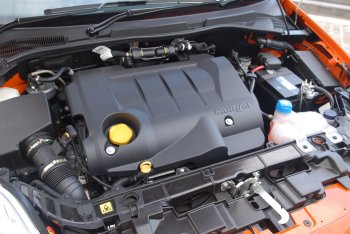|
Midway through a
European Commission-sponsored research project to track
products throughout their life cycle, Italian automaker Fiat
has provided a demonstration showing how RFID could help the
company create new revenue streams from scrapped vehicles -
reports Rhea Wessel in the RFID Journal.
A product's life cycle stretches from the item's inception
to its disposal, and this demonstration focuses on the "end
of life" phases of that cycle. In Fiat's case, it's the end
of a car's life, according to Dimitris Kiritsis, a staff
member at the Laboratory for Computer-aided Design and
Production at the Swiss Federal Institute of Technology in
Lausanne (EPFL). Kiritsis is the scientific coordinator of
the PROMISE project, a 22-member consortium that includes
Fiat. PROMISE stands for Product Lifecycle Management and
Information Tracking Using Smart Embedded Systems. The
project aims to develop the technology and information
models required to trace and provide up-to-date information
on each individual product manufactured in a factory. In
addition to Fiat, PROMISE members include Caterpillar, SAP,
Infineon Technologies and the University of Cambridge. The
project started in November 2004. When it ends in April
2008, PROMISE is expected to have cost an estimated 15.5
million euros (US$19.8 million). About 8 million euros
(US$10.3 million) will come from the European Commission.
In the European Union, laws mandate that 80 percent of each
car be recycled, and this amount is expected to rise. Fiat
designed a test system in which it applies RFID tags to
certain car components and records the status of these
components on an Electronic Control Unit (ECU), a type of
RFID-enabled computer built into the car. When one of those
components no longer functions, the servicing garage
replaces it with a new RFID-tagged part, and the ECU
interrogates the component's tag to upload information about
the new part. In the event that a car must be scrapped, a
driver can leave his car behind at a servicing garage
without paying for disposal. System operators then read the
information on the ECU by downloading it to the mechanic's
computer—or, it could be interrogated via another RFID
reader as the car enters the garage. The software in the
back end of the system then assesses the residual value of
each tagged component to see if it can be resold. Fiat is
conducting ROI studies, but has not yet published any
information. The company has some positive indications, but
these are based on estimations, Kiritsis told attendees at
the RFID Journal LIVE! Europe conference, held in
mid-October.
|
 |
|
A product's life cycle stretches from the item's
inception to its disposal, and this demonstration
focuses on the "end of life" phases of that cycle.
In Fiat's case, it's the end of a car's life,
according to Dimitris Kiritsis, a staff member at
the Laboratory for Computer-aided Design and
Production at the Swiss Federal Institute of
Technology in Lausanne (EPFL). |
|
|
 |
|
Midway through a European Commission-sponsored
research project to track products throughout their
life cycle, Italian automaker Fiat has provided a
demonstration showing how RFID could help the
company create new revenue streams from scrapped
vehicles. |
|
|
Kiritsis listed
five business applications for the PROMISE system: product
design, adaptive production, preventive maintenance,
tracking and tracing, and effective recycling. To make these
applications possible, he explained, technical elements of
the systems will include such standard elements as a product
embedded information device (PEID); middleware; product data
and knowledge management (PDKM) software; and
decision-support system (DSS) software.
Kiritsis described the PEID as a data-storage device able to
identify the product from sensor data. It can be read or
written with RFID and other standard interfaces, he said.
PROMISE middleware enables both device management and
communication between the PEID and back-end software. In
addition, middleware acts as the networking layer of PROMISE
systems, enabling the connection of information about the
phases of life. The PDKM software integrates and manages
information from all life-cycle phases of products. Finally,
decision-support system software provides decision support
for predictive maintenance, diagnosis and analysis of use
patterns.
Infineon Technologies' Daniel Barisic says different types
of PEID hardware may be needed to enable product life-cycle
management, and that PROMISE members are evaluating passive
RFID tags. Tests are ongoing with passive HF and UHF tags,
he said, adding that no favourite has yet been identified.
The project team will also evaluate low-cost active RF tags
for attachment to sensors and other peripherals. Another
consortium member, machine-tool constructor Fidia, is
working on a mid-life product-tracking demonstration to show
how it can get direct knowledge of the components in its
machines, as well as how they're being used.
"Based on this, they want to develop preventive-maintenance
systems," Kiritsis explained, adding, "They want to see in
advance if there's a problem." Within one year, he said, the
demonstrations should be ready for application to machines
and cars outside the lab for wider testing.
By Rhea Wessel / Article
courtesy of the
RFID Journal
|
|
|
|